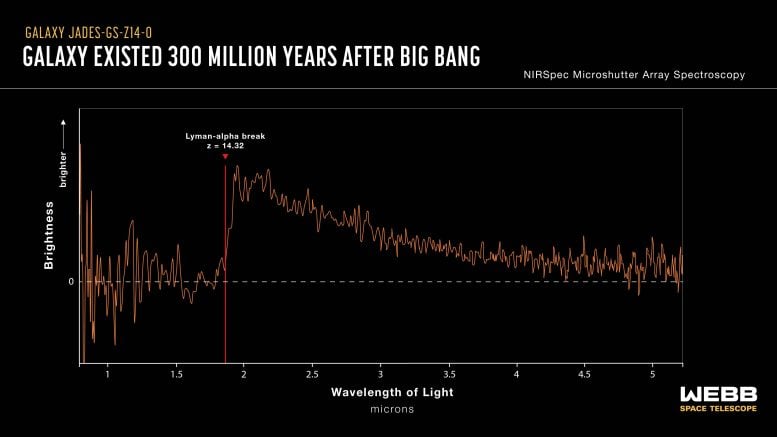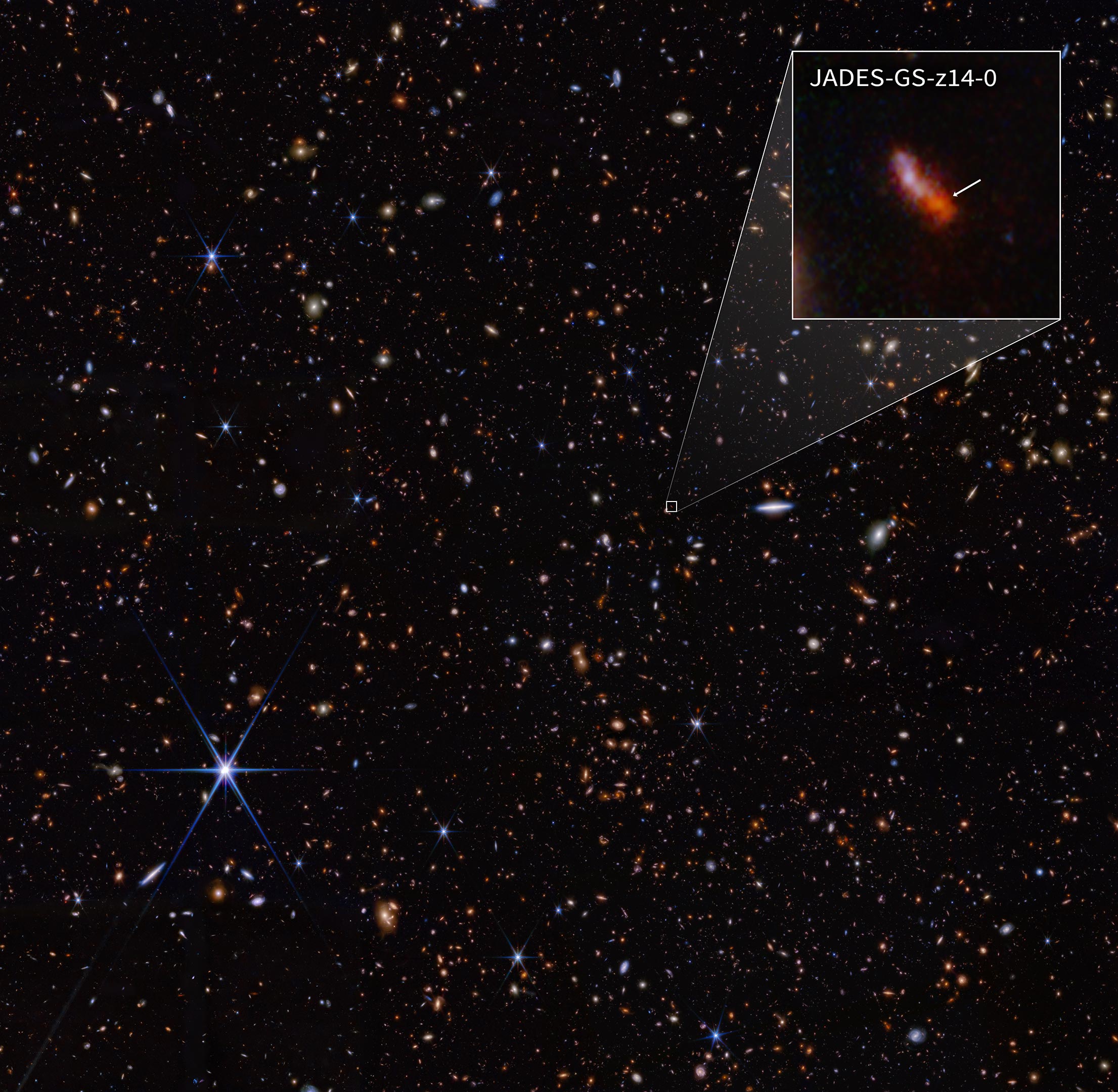This infrared image from NASA’s James Webb Space Telescope (also called Webb or JWST) was taken by the NIRCam (Near-Infrared Camera) for the JWST Advanced Deep Extragalactic Survey, or JADES, program. The NIRCam data was used to determine which galaxies to study further with spectroscopic observations. One such galaxy, JADES-GS-z14-0 (shown in the pullout), was determined to be at a redshift of 14.32 (+0.08/-0.20), making it the current record-holder for the most distant known galaxy. This corresponds to a time less than 300 million years after the Big Bang. Credit: NASA, ESA, CSA, STScI, Brant Robertson (UC Santa Cruz), Ben Johnson (CfA), Sandro Tacchella (Cambridge), Phill Cargile (CfA)

Scientists used NASA’s James Webb Space Telescope’s NIRSpec (Near-Infrared Spectrograph) to obtain a spectrum of the distant galaxy JADES-GS-z14-0 in order to accurately measure its redshift and therefore determine its age. The redshift can be determined from the location of a critical wavelength known as the Lyman-alpha break. This galaxy dates back to less than 300 million years after the Big Bang. Credit: NASA, ESA, CSA, Joseph Olmsted (STScI), S. Carniani (Scuola Normale Superiore), JADES Collaboration
Breakthrough in High-Redshift Galaxy Research
“The instruments on Webb were designed to find and understand the earliest galaxies, and in the first year of observations as part of the JWST Advanced Deep Extragalactic Survey (JADES), we found many hundreds of candidate galaxies from the first 650 million years after the big bang. In early 2023, we discovered a galaxy in our data that had strong evidence of being above a redshift of 14, which was very exciting, but there were some properties of the source that made us wary.
“The source was surprisingly bright, which we wouldn’t expect for such a distant galaxy, and it was very close to another galaxy such that the two appeared to be part of one larger object. When we observed the source again in October 2023 as part of the JADES Origins Field, new imaging data obtained with Webb’s narrower NIRCam (Near-Infrared Camera) filters pointed even more toward the high-redshift hypothesis. We knew we needed a spectrum, as whatever we would learn would be of immense scientific importance, either as a new milestone in Webb’s investigation of the early universe or as a confounding oddball of a middle-aged galaxy.
“In January 2024, NIRSpec observed this galaxy, JADES-GS-z14-0, for almost ten hours, and when the spectrum was first processed, there was unambiguous evidence that the galaxy was indeed at a redshift of 14.32, shattering the previous most-distant galaxy record (z = 13.2 of JADES-GS-z13-0). Seeing this spectrum was incredibly exciting for the whole team, given the mystery surrounding the source.
“This discovery was not just a new distance record for our team; the most important aspect of JADES-GS-z14-0 was that at this distance, we know that this galaxy must be intrinsically very luminous. From the images, the source is found to be over 1,600-light years across, proving that the light we see is coming mostly from young stars and not from emission near a growing supermassive arXiv:2312.10033
These spectroscopic observations were taken as part of Guaranteed Time Observations (GTO) program 1287, and the MIRI ones as part of GTO program 1180.
Stefano Carniani is an assistant professor at Scuola Normale Superiore in Italy. He is also a member of the Webb/NIRSpec GTO team and studies galaxy and black hole evolution across cosmic time.
Kevin Hainline is an associate research professor at the Steward Observatory, University of Arizona. He is also a member of the Webb/NIRCam Science team, and is using data from the JADES GTO survey to explore the evolution of galaxies and active galactic nuclei at the highest redshifts.




















Discussion about this post